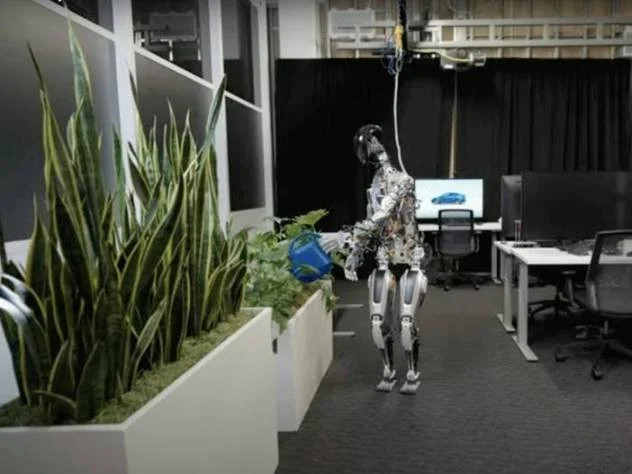Recently Elon Musk demonstrated Tesla’s humanoid robot prototype, “Optimus”, which he expects to bring to market in a few years, for around $20,000 each. Optimus performed various tasks during the demonstration, including watering indoor plants.
Which got me thinking…Watering plants is not some mindless repetitive movement. Watering requires higher cognitive skills, including problem-solving, decision-making, and flexible thinking. Here are some examples (from Millcreek Gardens) of watering tasks that utilize these skills:
Determine When Each Indoor Plants Needs to be Watered
To know when your houseplants need a drink, touch the soil. If it’s dry, the plant needs water. If the surface is moist, hold off on watering. Check every single specimen – just because one needs to be watered doesn’t mean they all do.
Constantly Adjust Watering Frequency for Each Plant
You can set a schedule for checking to see if your indoor plants need water, but don’t base your watering on the calendar. Sticking to a once-a-week plan can lead to overwatering and underwatering, as some houseplants may need to be watered more or less often [depending on species, root growth, sun exposure, soil composition, etc.]
Determine When the Soil has been Soaked Thoroughly for Each Plant
When your indoor plants need to be watered, don’t just give them a tiny sip. Soak the soil thoroughly, until water starts to come out of the pot’s drainage holes. Giving houseplants a good, long drink encourages healthy root system development.
Make Sure No Plants Sits in Water
Soaking the soil is important, but don’t go overboard and add too much – if houseplants sit in water, they can develop root rot. If you accidentally overwater, use a turkey baster to remove the excess.
I doubt Optimus will ever master these skills in a typical household - and who needs it anyway? Watering indoor plants takes little time and is not an onerous task. In fact, I find it rather rewarding to help a living thing grow and thrive.
Of course, with additional tinkering Optimus may eventually be able to handle office plants, assuming their watering needs are predictable and programmable. But why must a plant-watering robot look humanoid? Ideally, form follows function and it’s hard to see what function is served by making a robot cute. Except to get people to fork out $20,000 because they just must have one.
